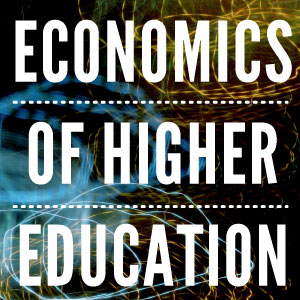By Bruce Chapman and Lorraine Dearden
The University of Bologna, considered to be the first official university, was established in the late 11th century, and some scholars in need of finances were offered loans. This type of provision was not formalised as a student loan system until 1240 when the Bishop of Lincoln did so using money from the University of Oxford.
Many other universities followed suit, but it took until 1951 for the government of Colombia to initiate the world’s first national student loan scheme, known as ICETEX, which is still in (faltering) operation.
Over the 1960s and beyond, these arrangements became commonplace and today the higher education financing systems of the vast majority of countries are underpinned by student loan schemes.
There is a consensus in economics that loans are an essential part of government higher education policy to help relatively poor prospective students pay for tuition and-or to provide income support during periods of full-time study.
The reason is that, unlike in many other areas of funding (such as mortgages to finance the purchase of a house), commercial (bank) borrowing by students for human capital investments is unavailable simply because in the event of default a lending agency bears all risk; there is no collateral available to be sold to offset the cost of uncollectible debts.
Future income
Until 1989 these systems were all characterised by the collection of debt over a given time period, like a mortgage, and are known as time-based repayment student loans or TBRL.
However, nearly 30 years ago there began a quiet revolution internationally in higher education financing policy. This happened in Australia with the introduction of a student loan system in which debt obligations are not based on time, but instead depend on the future income of the debtor.
Known as the Higher Education Contribution Scheme or HECS, Australian debtors (most often as graduates) repay their loans when and only if their personal incomes exceed an annual threshold amount, which is currently AU$57,000 (US$44,200); the system is known as an ‘income-contingent loan’ or ICL.
After HECS began it was followed by the adoption of similar income-continent loan systems in New Zealand (1991), England (1998), Ethiopia (2001), Hungary (2001), Thailand (for 2006 only) and the Netherlands (2017), and partially in the United States (1994), South Korea (2011) and Japan (2017).
Countries currently undergoing legislative reform towards universal income-contingent loan systems include Colombia, Brazil and Japan and there are active public debates under way in Malaysia, Ireland and the US. In most of these cases research contributed by the authors of this article in partnership has provided the empirical and analytical bases for reform.
Once the economics of both TBRL and ICL is understood, it becomes clear why all the policy traffic internationally in student loans policy is heading in the same direction.
The critical problem associated with TBRLs is that the repayment obligations are fixed with respect to time and are thus not sensitive to a debtor’s financial circumstances. This raises two related problems: repayment hardship and the prospect of default.
Repayment hardship and default
Repayment hardship with a TBRL happens in a given period of time when a debtor has insufficient income to repay their loan comfortably.
This might happen for reasons not under the control of the borrower, perhaps as a result of unemployment, illness or caring for a sick family member. Some debtors will be able to endure the difficulty and maintain loan repayments, albeit under duress.
But others with TBRLs experiencing financial difficulties will default on their loans and this has very serious negative consequences both for themselves and for the government.
Individuals defaulting on a student loan incurs major damage to their credit reputations and makes future access to commercial loans, such as for the purchase of a house, extremely difficult or even impossible for long periods.
For the government, a student loan default implies that taxpayers will be covering losses, meaning for a large number of countries hundreds of millions of dollars of foregone loan revenue; default rates can be disturbingly high, and are at least 40% in Brazil, Malaysia and Thailand.
Broadly, the advantages of income-contingent loan systems are two-fold. First, because repayments of the debt are only required when former students have the capacity to do so, there is no repayment hardship for any debtor, and thus there are no formal defaults. Second, because the debts are collected in a straightforward way out of incomes by employers (just like income taxes are), ICLs are extremely inexpensive to operate.
And because there is no need for an enforcement mechanism beyond employer withholding, there are no major administrative costs associated with the default enforcement requirements of a TBRL. Countries such as Colombia, the US and Thailand spend very significant scarce public resources trying to collect student loans.
Of course, income-contingent loans need to be country specific and often involve significant costs to governments. In England, for example, close to 40% of ICL debt is uncollected and in New Zealand taxpayers provide very substantial interest rate subsidies to student debtors.
But there is no doubt that a well-designed income-contingent loan system has very significant advantages over alternative traditional student loan systems which are heading, perhaps inevitably, towards extinction.
This blog was first published in university world news: http://www.universityworldnews.com/article.php?story=20180411082843685

